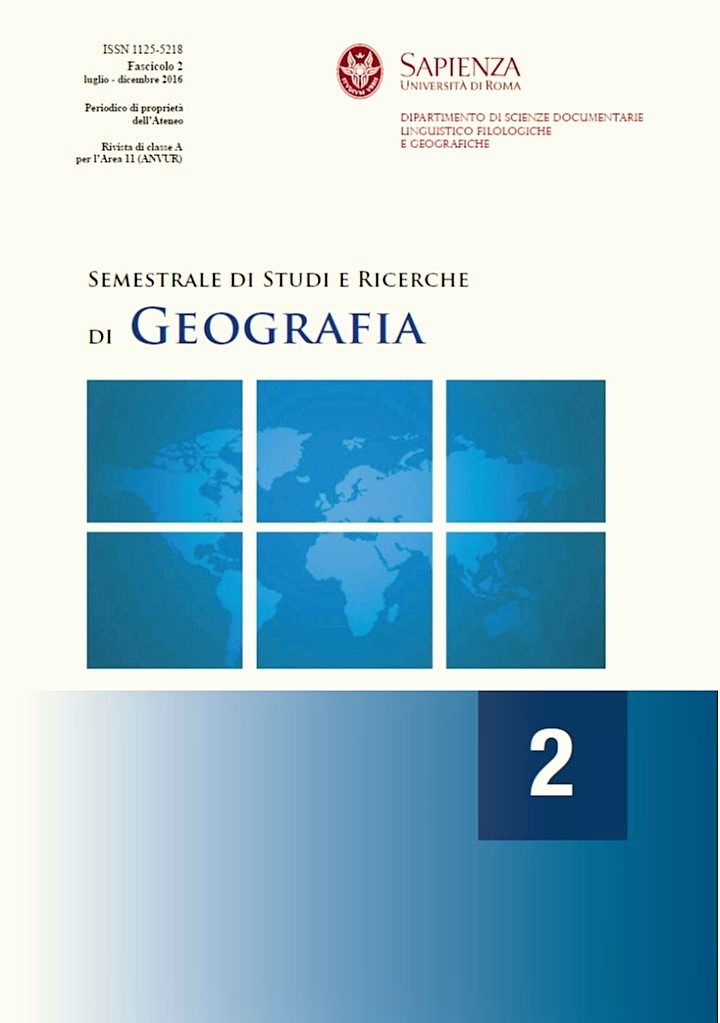Le catene globali del valore del settore tessile-abbigliamento: l’eccellenza europea nel confronto con il predominio asiatico
DOI:
https://doi.org/10.13133/1125-5218.15050Abstract
The textile and apparel value chain: the European excellence vis-à-vis the Asiatic predominance
Since 2005, after more than forty years of import quotas, the textile and clothing sector has become subject to the general rules of the General Agreement on Tariffs and Trade. The liberalization caused a great shift in the global geography of textile and apparel production and trade, and a strong restructuring of firm strategies.
China has been the big winner, becoming the world’s largest exporter, but other
emerging suppliers (Bangladesh, Vietnam, Cambodia) are recently expanding their roles. This paper analyze the possible landscape for the global textile and apparel industry in the future, exploring the various drivers of change that are influencing and shaping the sector (as the increase in size of population and increase of middle class size in developing nations, the rising of living standard in previous low wage supplying countries, the concern for sustainibility and for a growing trasparency in the supply chain). If present trends will be reinforced, the EU will strengthen its technological lead, mainly serving the upper end of markets and focusing on innovation, quality and design, while emerging countries will improve their specialisation in mass and medium quality production.
La chaine de valeur du sector textile-habillement, l’excellence europeénne comparée avec la dominance asiatique
De 2005, après plus de quarante ans de contingents d’importation, le secteur textile et de l’habillement est devenu soumis aux règles générales de l’Accord général sur les tarifs douaniers et le commerce. La libéralisation a provoqué un grand changement dans la géographie mondiale du secteur, et une forte restructuration des stratégies des firmes. La Chine a été le grand gagnant, devenant le plus grand exportateur du monde, mais d’autres fournisseurs émergents (comme le Bangladesh, le Vietnam, ou la Cambodge) ont récemment renforcé leur rôle. Ce document analyse le paysage
probable pour l’industrie textile et de l’habillement, exploting les différents facteurs de changement qui influencent le secteur (comme l’augmentation de la taille de la population et de la classe moyenne dans les pays en développement, la montée du niveau de vie dans les pays a bas salaires, le souci de la durabilité et de la trasparency croissante dans la chaîne d’approvisionnement). Si les tendances actuelles seront renforcées, l’UE renforcera son avance technologique, servant principalement le niveau supérieure des marchés et en se concentrant sur l’innovation, la qualité et le design, tandis que les pays émergents pourrant améliorer leur spécialisation dans la production de masse et la production de qualité moyenne.
##submission.downloads##
Pubblicato
Fascicolo
Sezione
Licenza
Gli autori che pubblicano su questa rivista accettano le seguenti condizioni:- Gli autori mantengono i diritti sulla loro opera e cedono alla rivista il diritto di prima pubblicazione dell'opera, contemporaneamente licenziata sotto una Licenza Creative Commons - Attribuzione che permette ad altri di condividere l'opera indicando la paternità intellettuale e la prima pubblicazione su questa rivista.
- Gli autori possono aderire ad altri accordi di licenza non esclusiva per la distribuzione della versione dell'opera pubblicata (es. depositarla in un archivio istituzionale o pubblicarla in una monografia), a patto di indicare che la prima pubblicazione è avvenuta su questa rivista.
- Gli autori possono diffondere la loro opera online (es. in repository istituzionali o nel loro sito web) prima e durante il processo di submission, poiché può portare a scambi produttivi e aumentare le citazioni dell'opera pubblicata (Vedi The Effect of Open Access).


